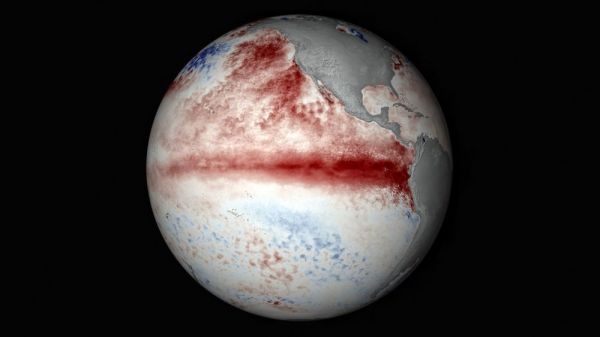Climate change is increasing the frequency of extreme El Niño events, leading to intensifying droughts, worsening floods, and shifting hurricane patterns, according to a new study published in the Proceedings of the National Academy of Sciences.
The study, led by scientists in China and the United States, examined data from 33 El Niños dating back to 1901. It found that since the 1970s, El Niños — a natural periodic warming in the Pacific Ocean that can change weather patterns globally — have been forming farther to the west in the Pacific Ocean, where temperatures are warmer. Strong El Niños can cause severe drought in dry climates such as Australia and India, intense flooding in wetter climates such as the Pacific Northwest and Peru, and causes more hurricanes to form in the Pacific and fewer in the Atlantic.
Before 1978, 12 of 14 El Niños formed east of the International Dateline, the study found. Since 1978, all 11 have formed in the central or western Pacific Ocean, a shift of hundreds of miles, the Associated Press reported. There have been three “super” El Niños since the shift — in 1982, 1997, and 2015 — that broke new average temperature records and triggered catastrophic natural disasters. The 1997-1998 El Niño, for example, caused thousands of deaths from severe heat, flooding, drought, and coastal storms, and generated as much as $96 billion in damage, according to the United Nations.
Read more at: Yale Environment 360
Sea surface temperature anomalies in the Pacific Ocean during the 2015 El Niño. (Photo Credit: NOAA/STUART RANKIN)


